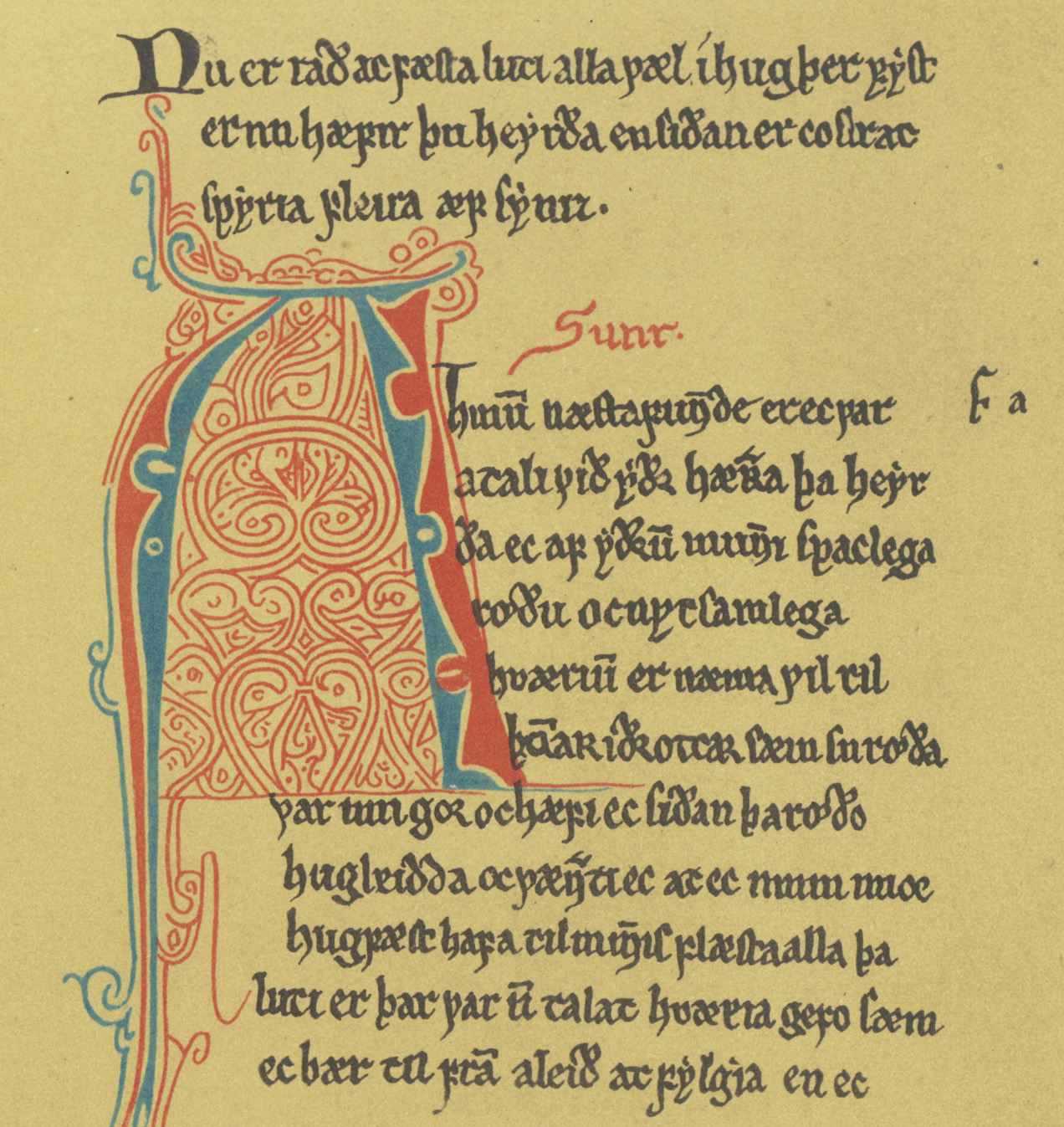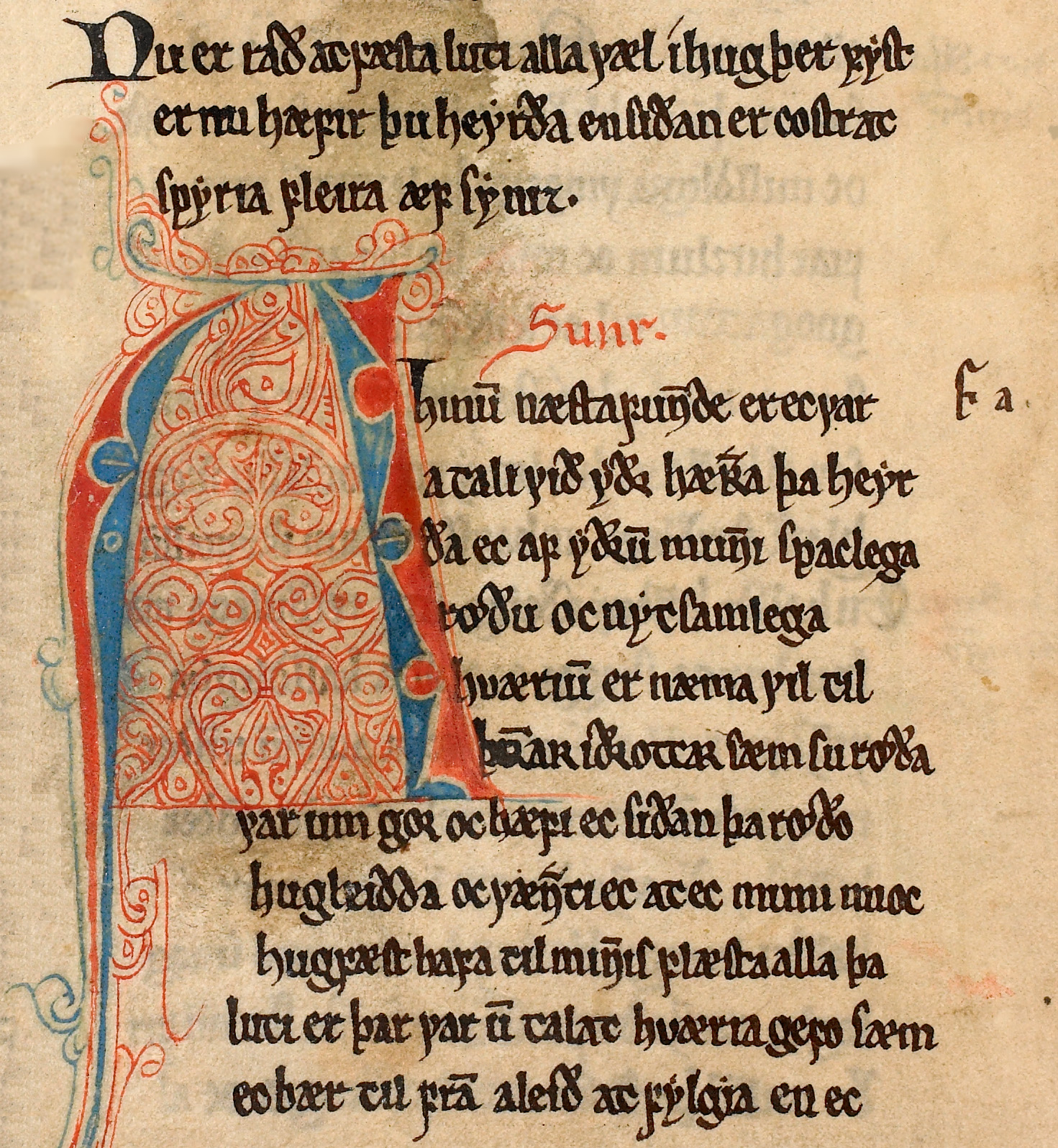The term facsimile derives from lat. facere = 'to make' (imperative) and lat. similis = 'similar'. Nowadays, a facsimile is usually a photographic reproduction of hand-written texts or of early prints. There are only a few publishing houses world-wide that are able to produce high quality printed facsimiles, i.e. such that the facsimile looks mostly identical to the original, especially concerning the colour of ink and of drawings. Some facsimiles even imitate holes, fissures and stitching in parchment or paper as well as irregularities of the borders and other corruptions on the surface of the witness. The majority of modern facsimile editions, however, render the source as photographic plates in a modern-style book, although usually of a high quality with respect to paper, binding and cover.
Until the middle of the 19th century, hand-made facsimiles were made for many manuscripts, although typically as specimens of single pages or even smaller sections. Fig. 1 illustrate the quality of such facsimiles.
Illustrations
Figs. 1 and 2. Two facsimiles from the Old Norwegian codex optimus of Konungs skuggsjá, København, Den Arnamagnæanske Samling, AM 243 bα fol (ca. 1275). Fig. 1 is a handmade mid-19th century facsimile while fig. 2 is a recent photographic facsimile. One has to look closely at the handmade facsimile in order to realise that it is a fac simile; what gives it away is first of all the evenness of the background and the fact that the writing on the backside of the leaf does not shine through.
After the development of photographic reproductions in the middle of the 19th century, a large number of facsimile editions were published of classical as well as mediaeval manuscripts. The heyday of these editions was the 20th century, but these series have largely been discontinued in the early 21th century. Many facsimile editions were published in monumental and expensive series primarily intended for the library market. For example, in the Nordic contries there were grand series like Corpus Codicum Islandicorum Medii Aevi (1930–1956), Corpus Codicum Suecicorum Medii Aevi (1943–1967), Corpus Codicum Norvegicorum Medii Aevi (1950–2002), Early Icelandic Manuscripts in Facsimile (1958–1993), and Corpus Codicum Danicorum Medii Aevi (1960–1973). Until the end of the 20th century, they were mostly printed in greyscale (often collotype), but some of the latest facsimile editions were published in full colour.
Nowadays, manuscripts and prints are primarily reproduced as digital scans by public libraries and archives and made available directly on the Internet. This development has a great influence on academic teaching, as well as on scholarly editing. Furthermore, the originals are well preserved by this practice as they have to be consulted much less. These days facsimiles have lost some importance due to the existence of such digital facsimiles (cf. digital edition).
Even if the photographic sections of the facsimile editions are regarded as obsolete by many, and by most as being of lower quality than modern high-resolution photographs, many of these facsimile editions contain introductions of a high quality to the codicology, palaeography, history and contents of the manuscript. This part of the facsimile editions may in fact prove to be their most important contribution to later philology.
References
– Urchueguía, Cristina. 2000. “Edition und Faksimile: Versuch über die Subjektivität des Objektivs.” In: Text und Edition: Positionen und Perspektiven, edited by Rüdiger Nutt-Kofoth et al., 323–352. Berlin: Erich Schmidt Verlag.
– Hansen, Anne Mette. 2005. “Faksimileudgaver og diplomatariske udgaver.” In Lesemåder: Udgavetyper og målgrupper, edited by Per Dahl, Johnny Kondrup, and Karsten Kynde, 153–177. Nordisk Netværk for Editionsfilologer. Skrifter, vol. 6. København: Reitzel.
In other languages
DE: Faksimile (Faksimileausgabe)
FR: (édition) fac-similé
IT: (edizione in) facsimile
OH, TB


